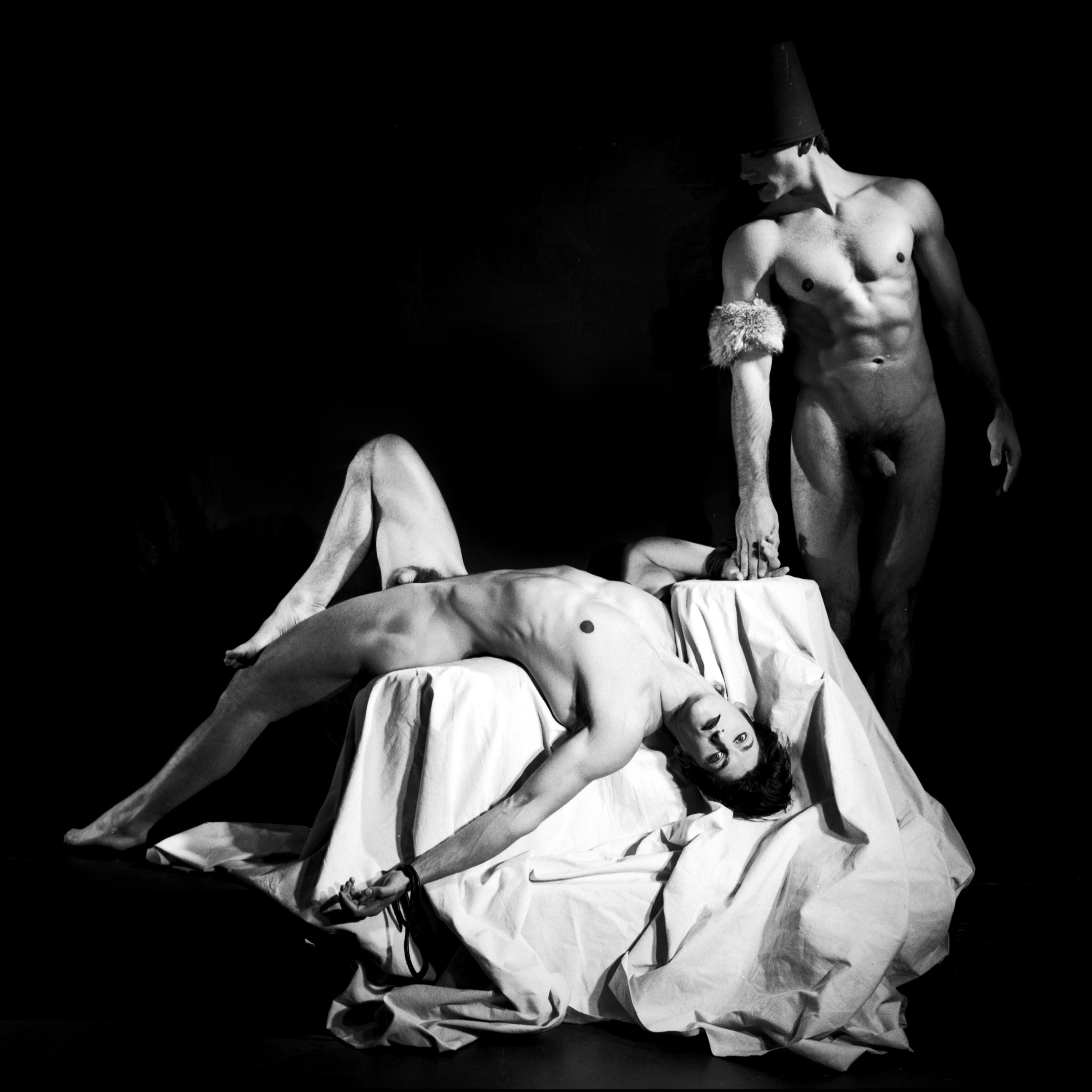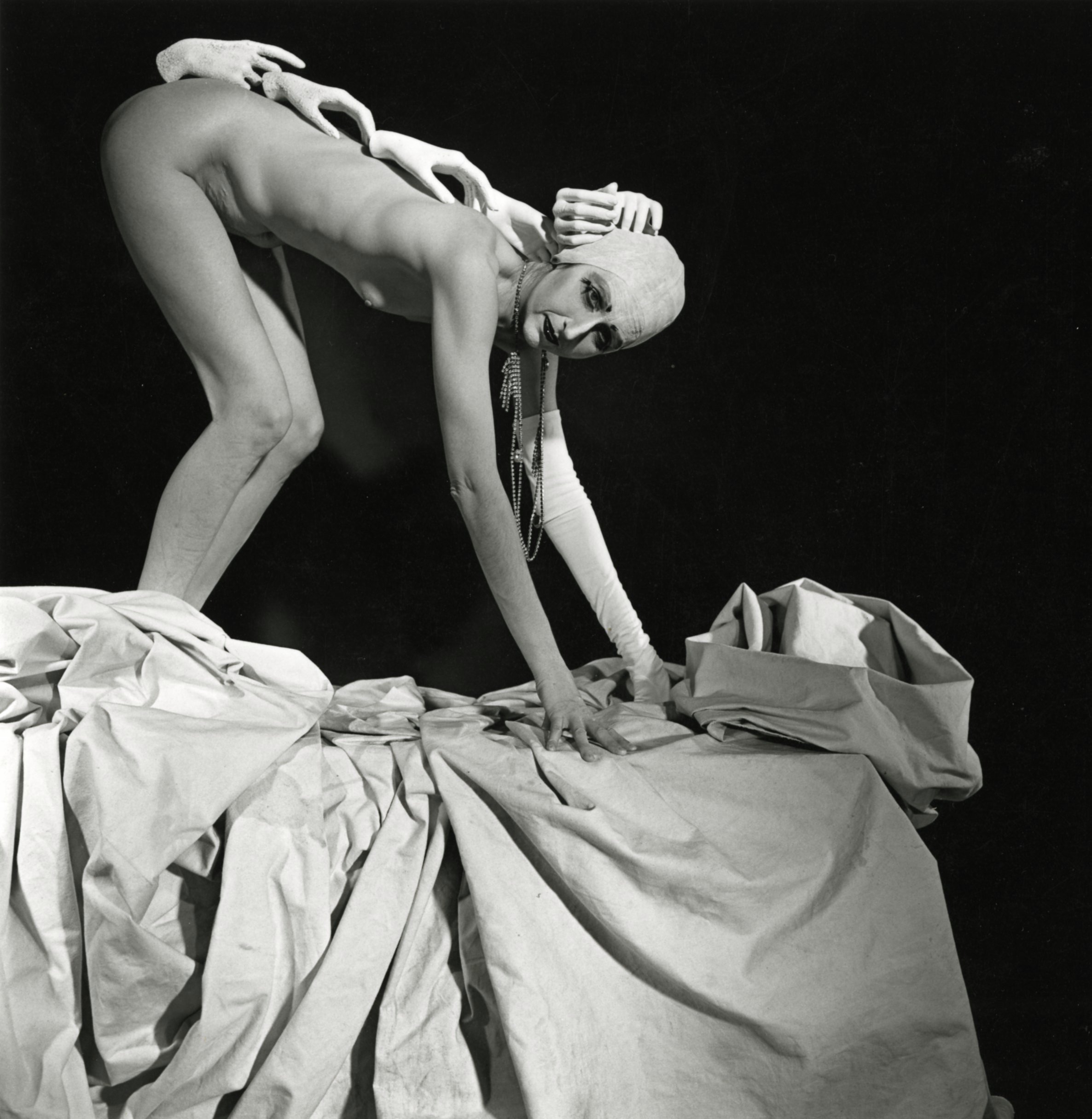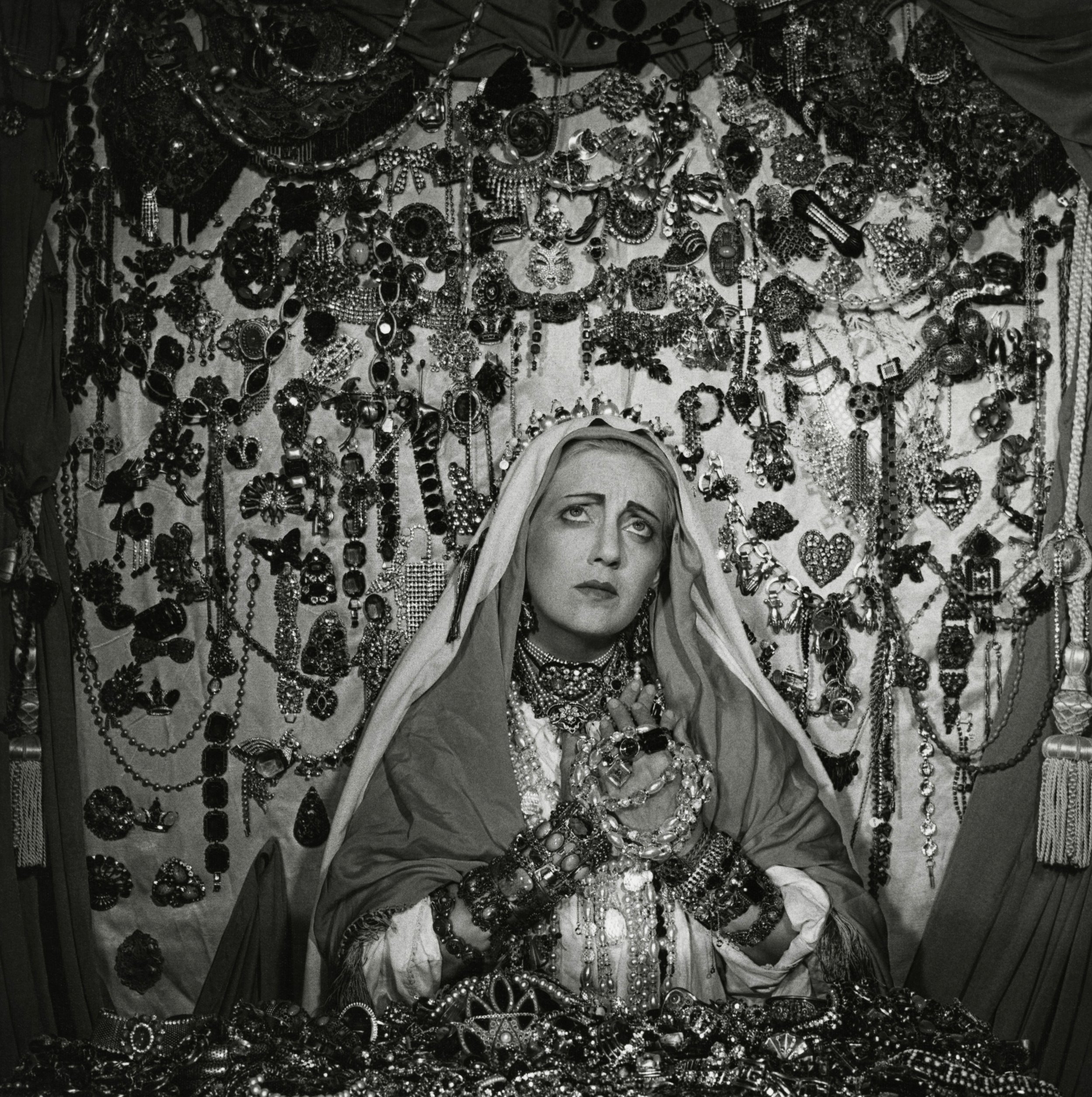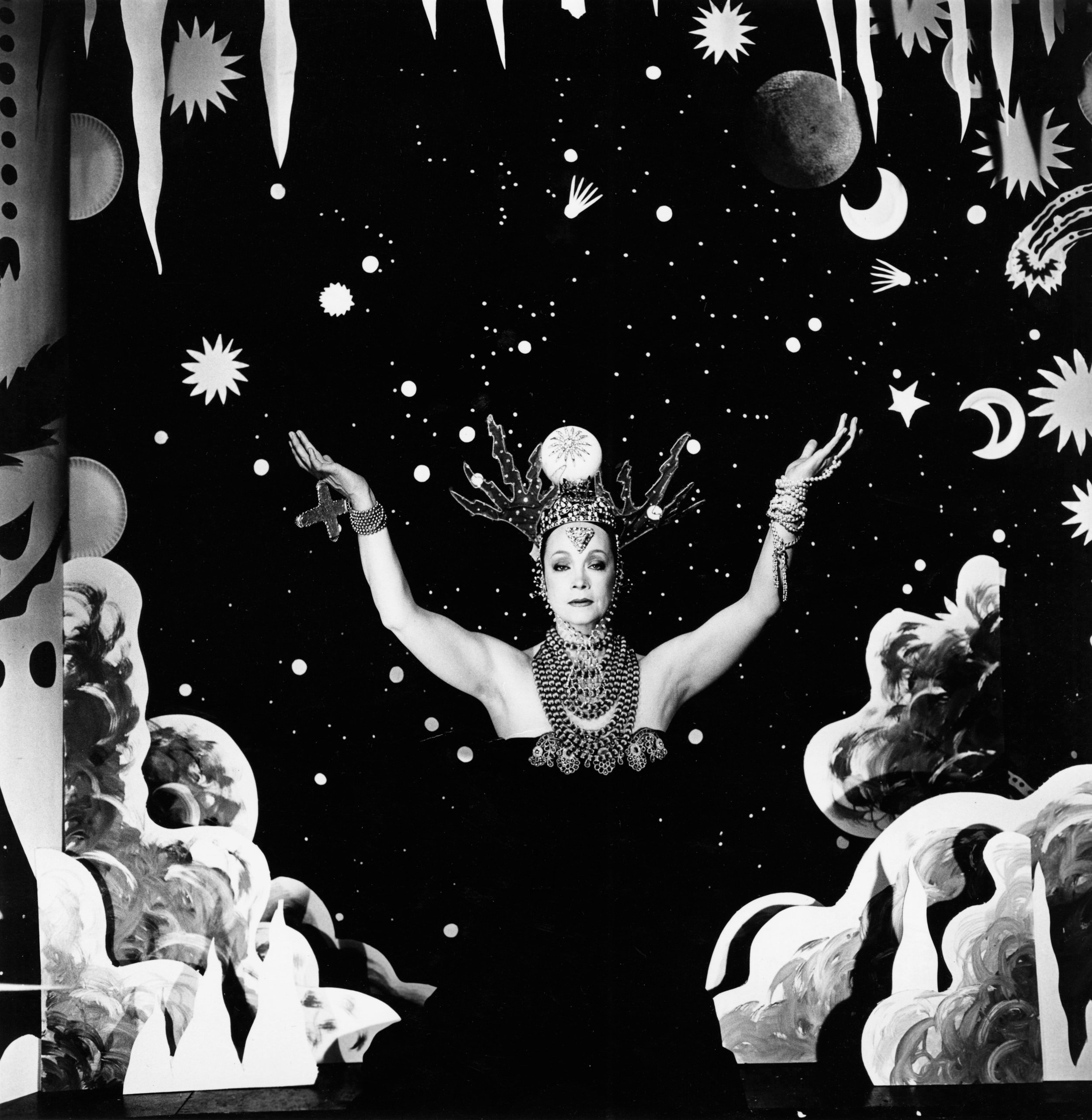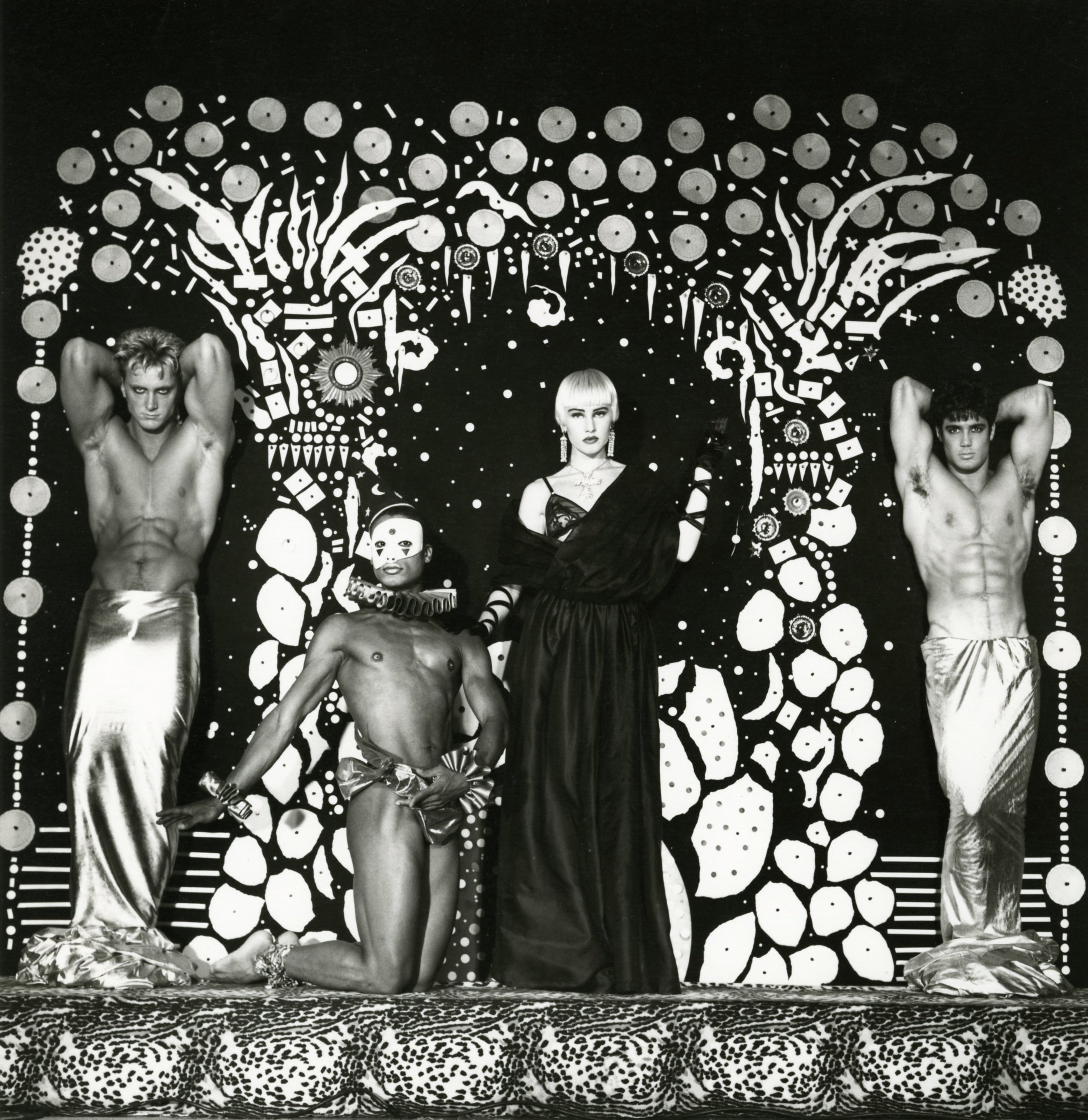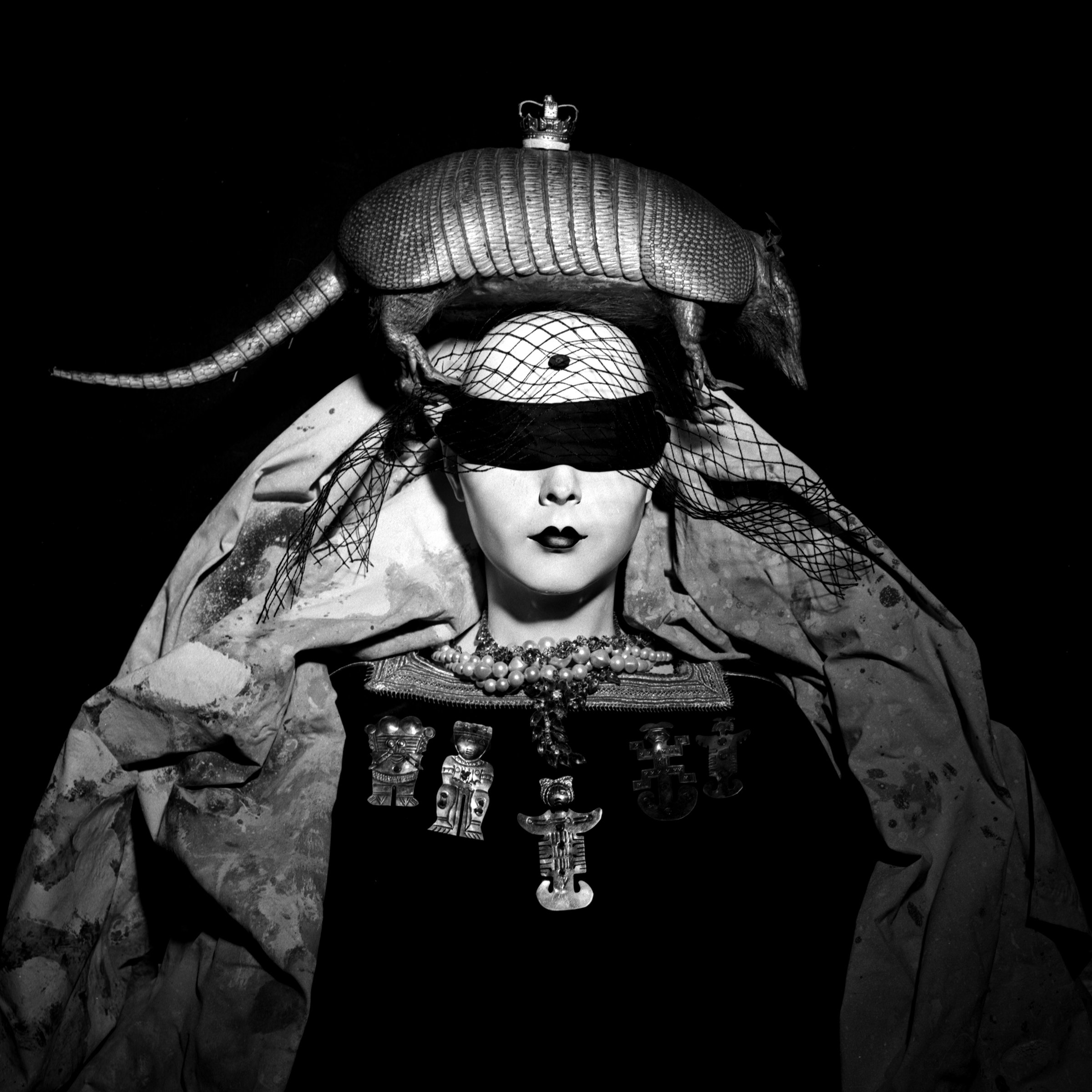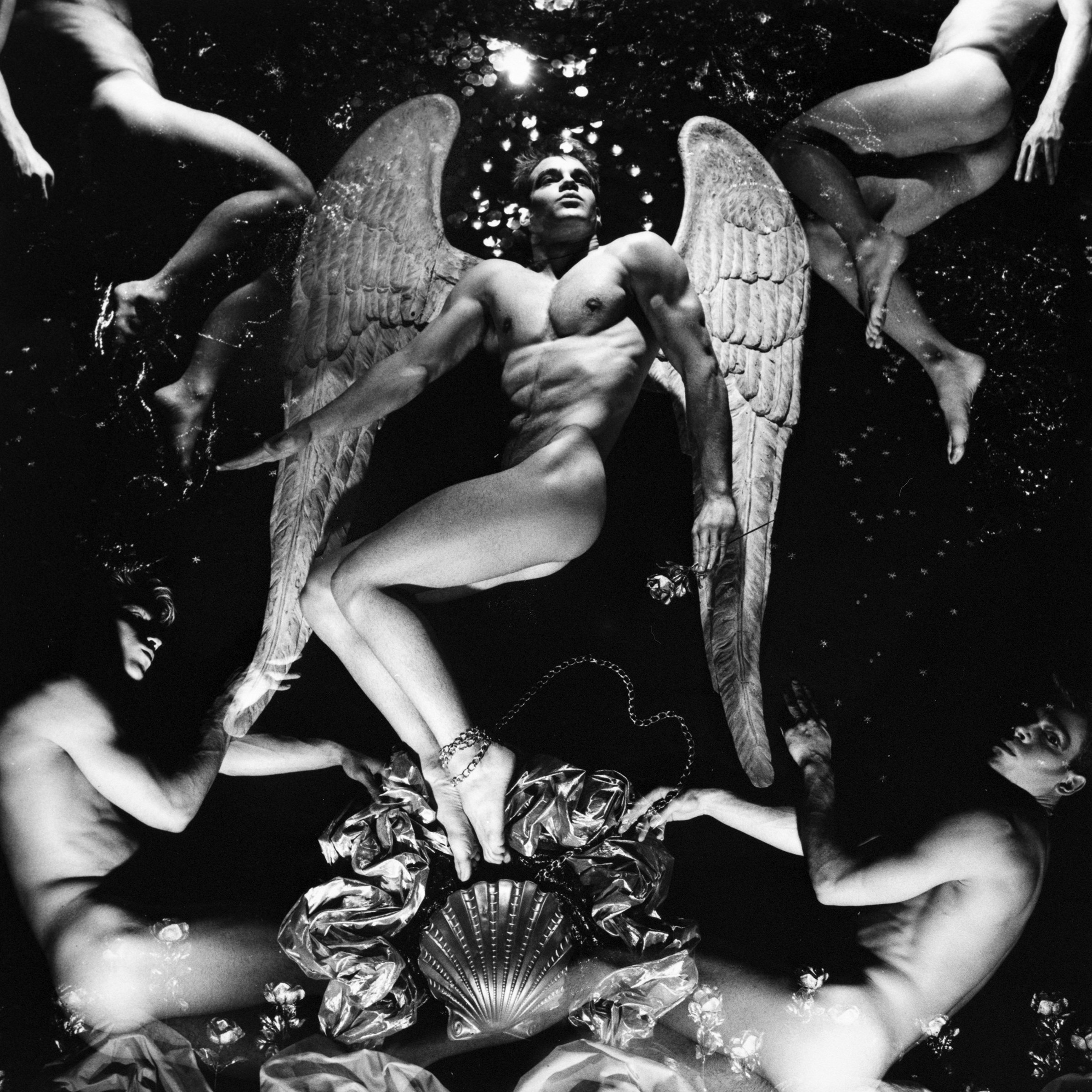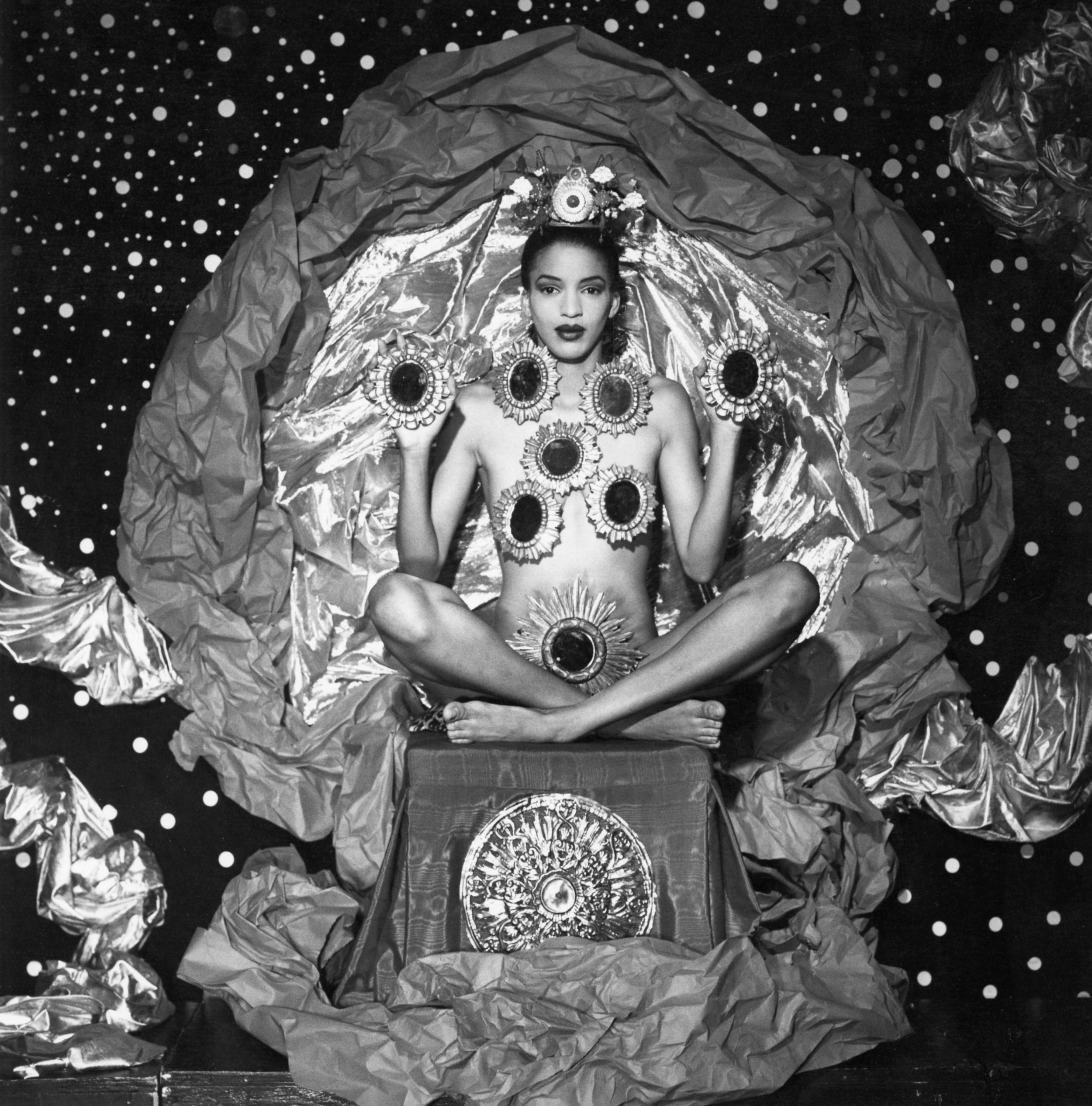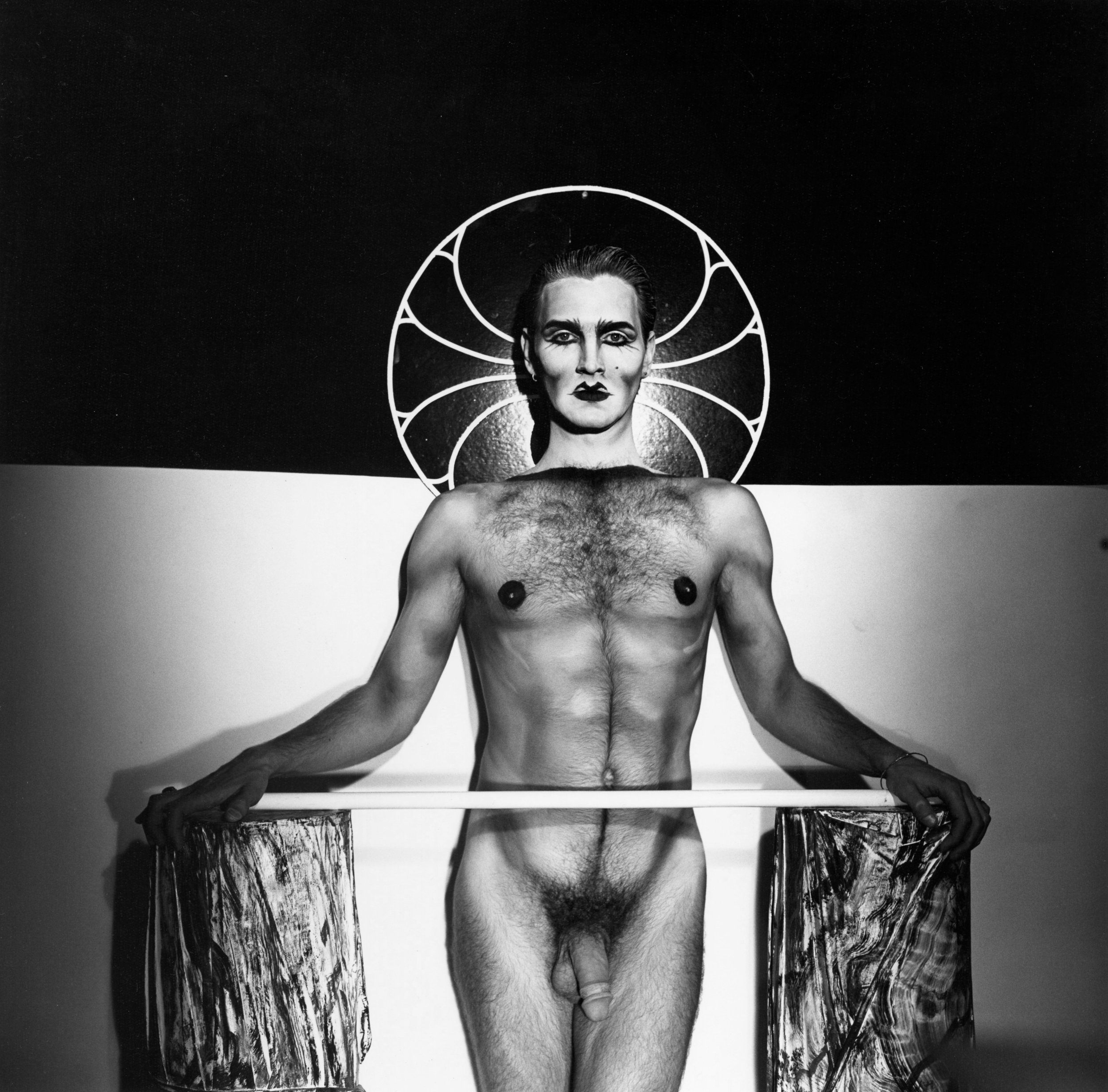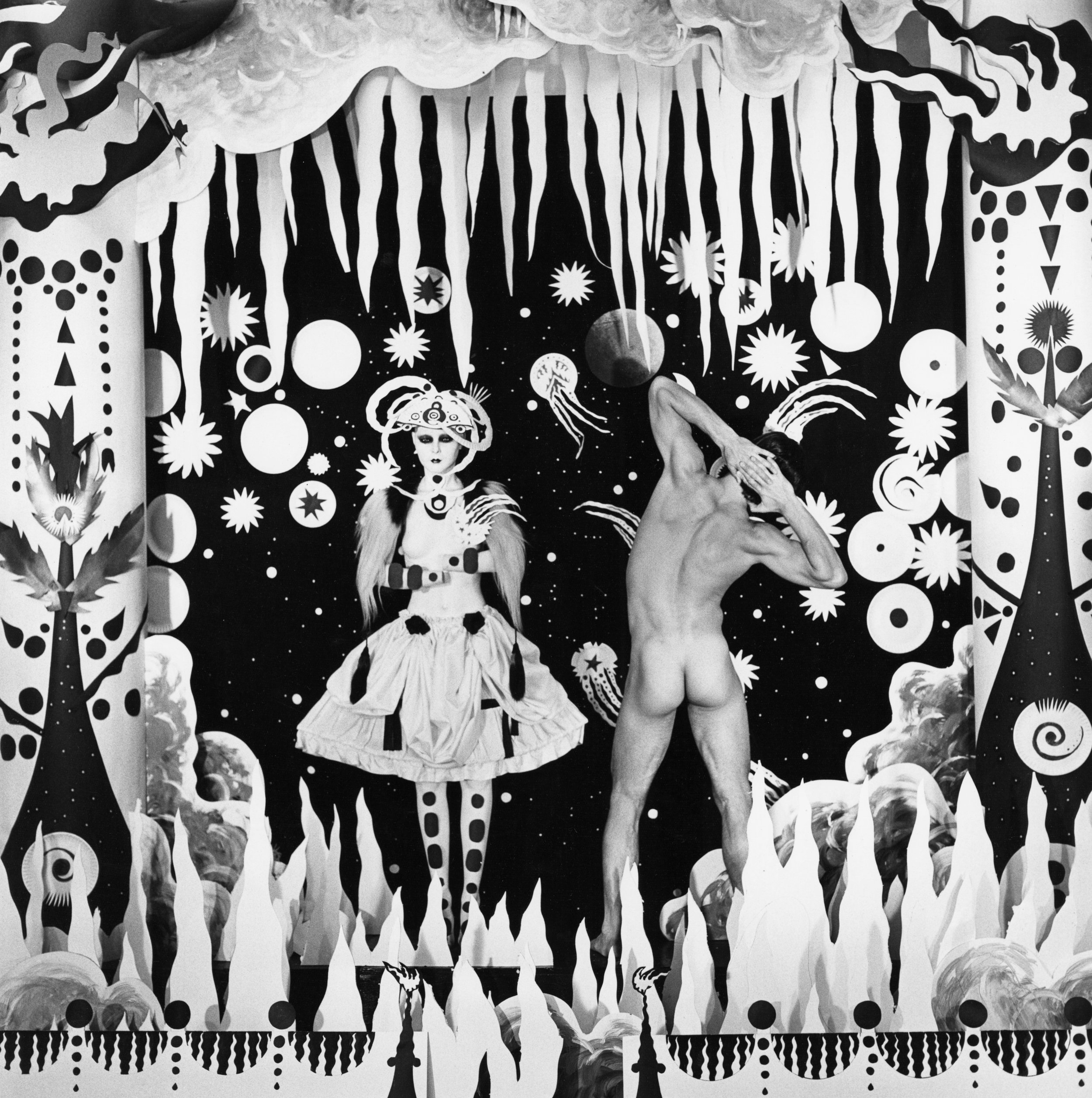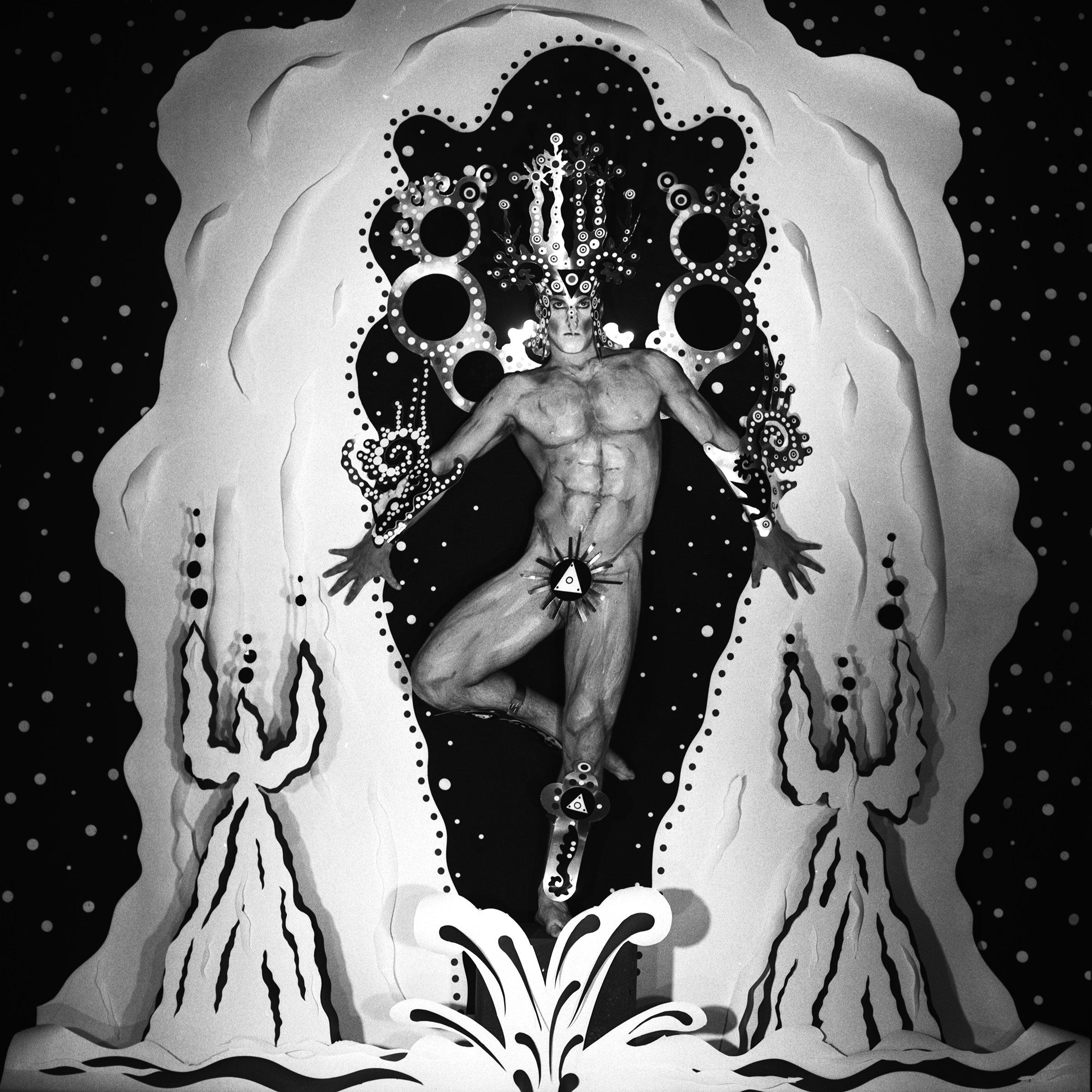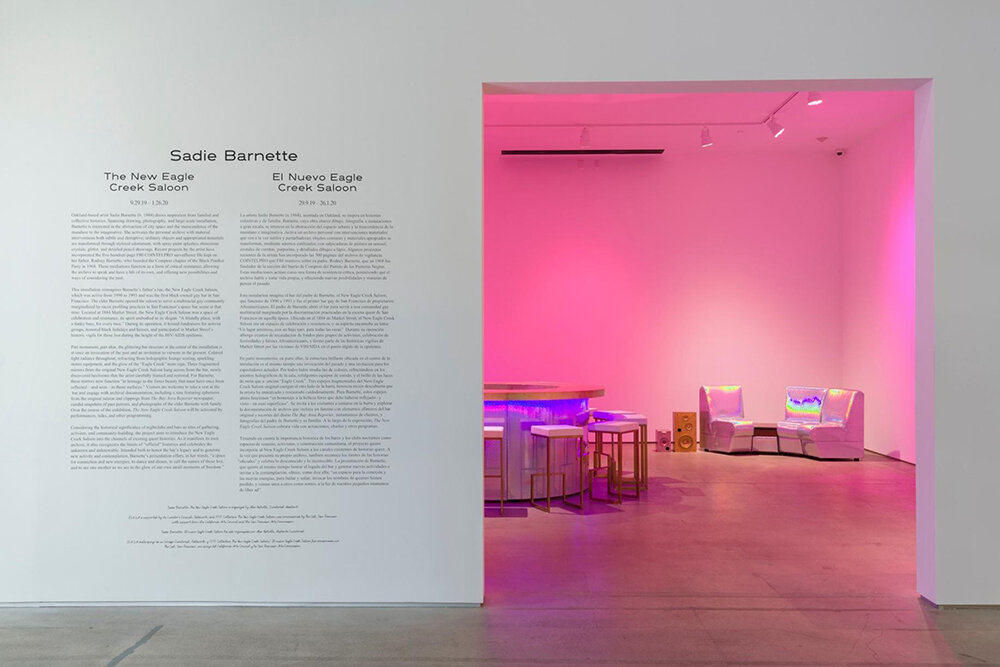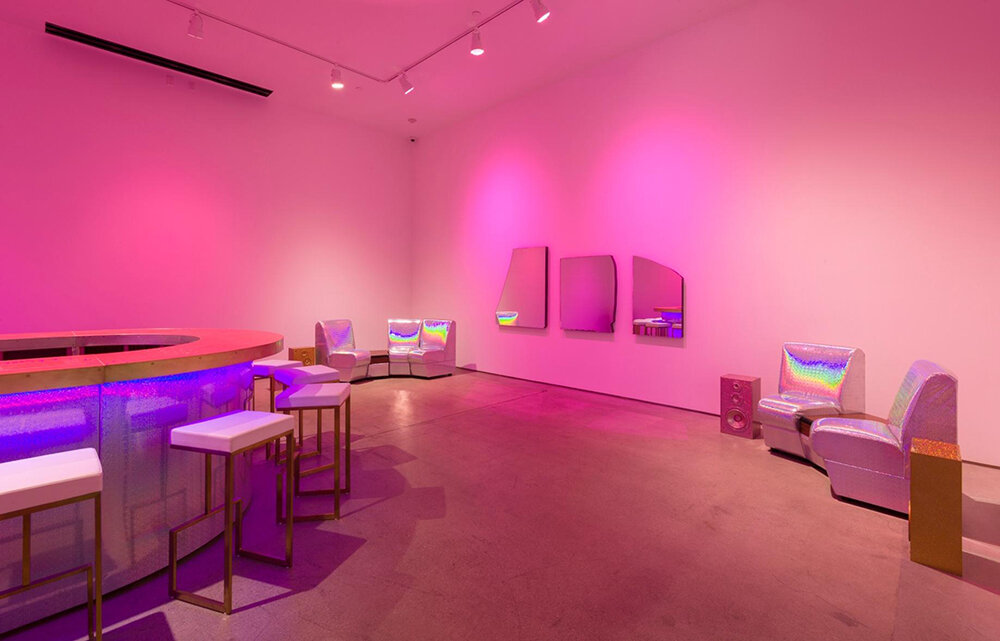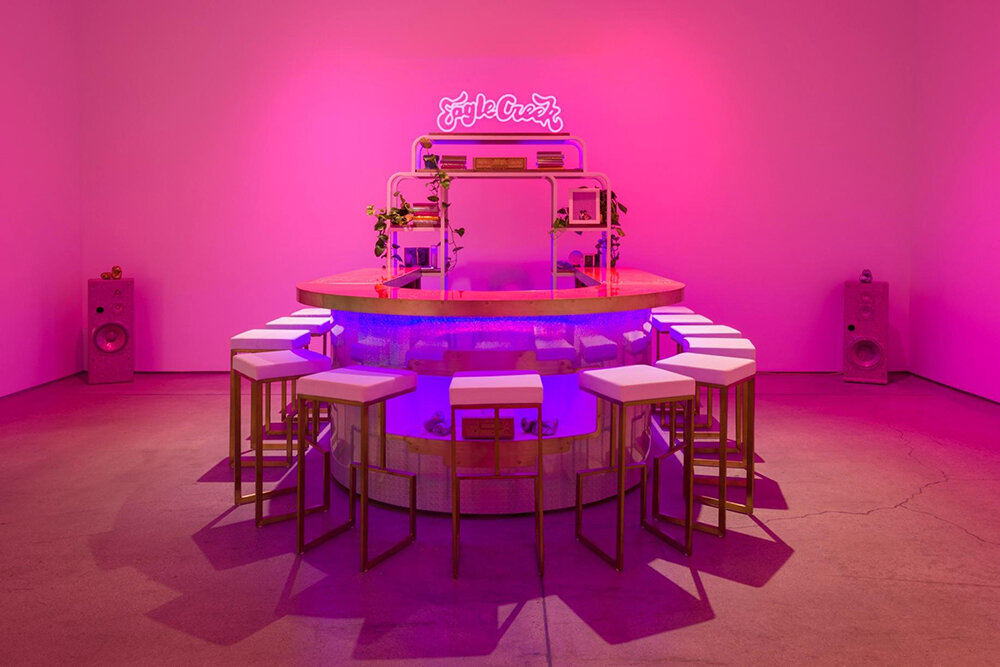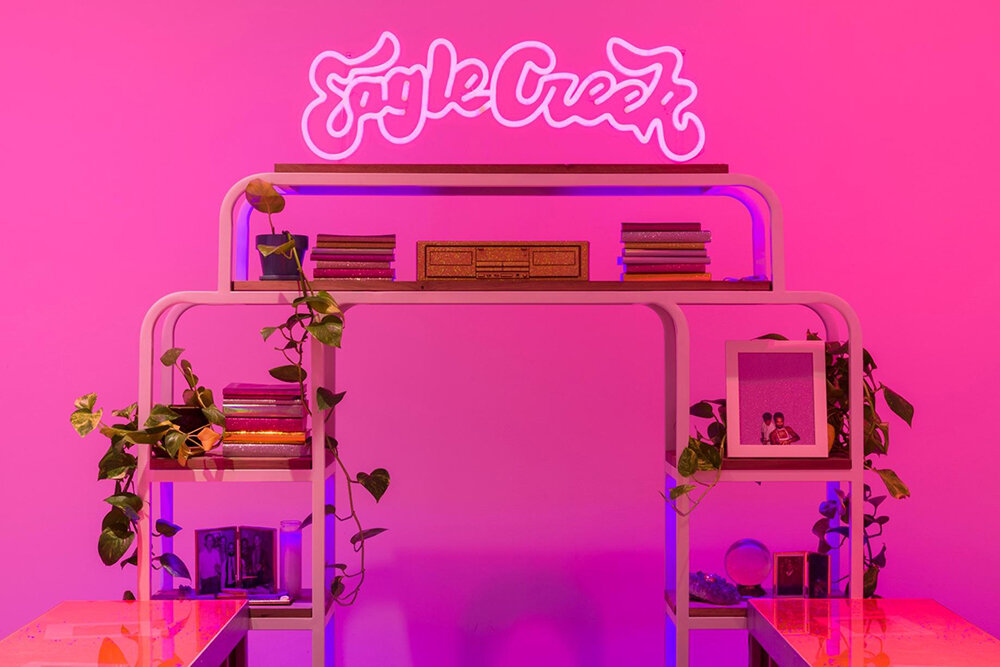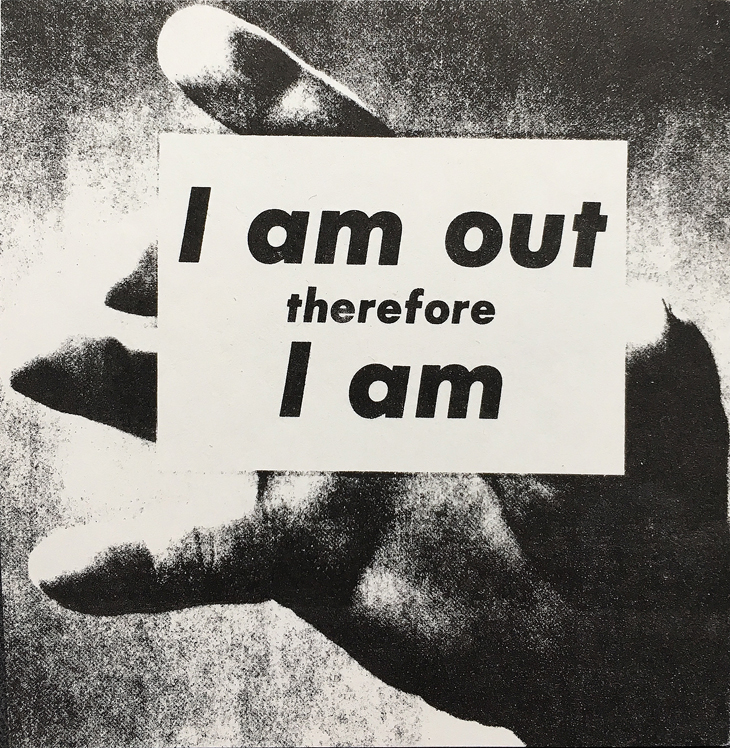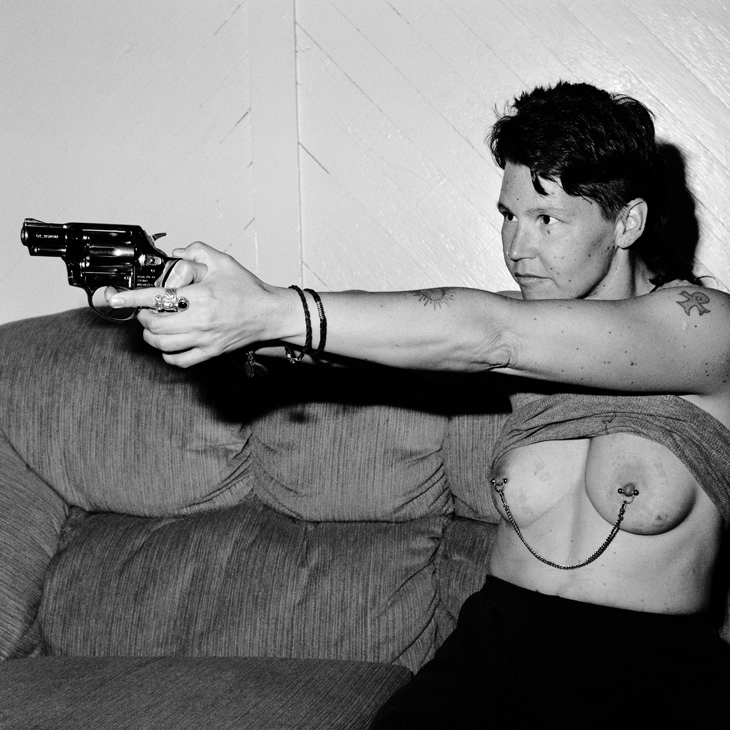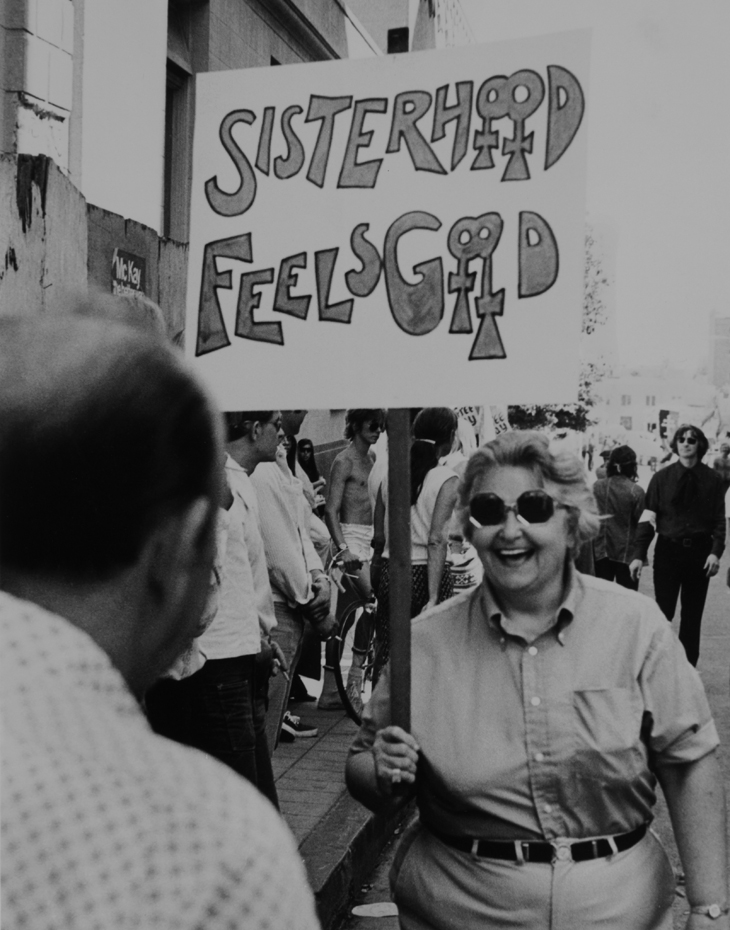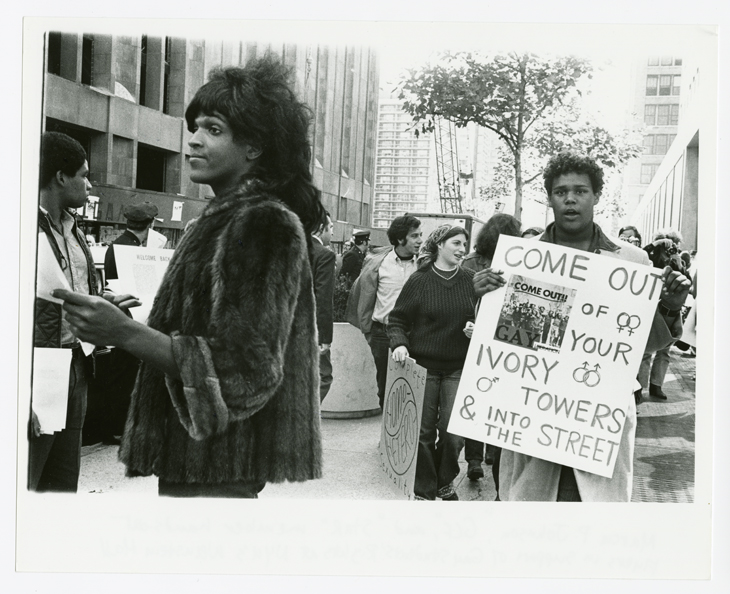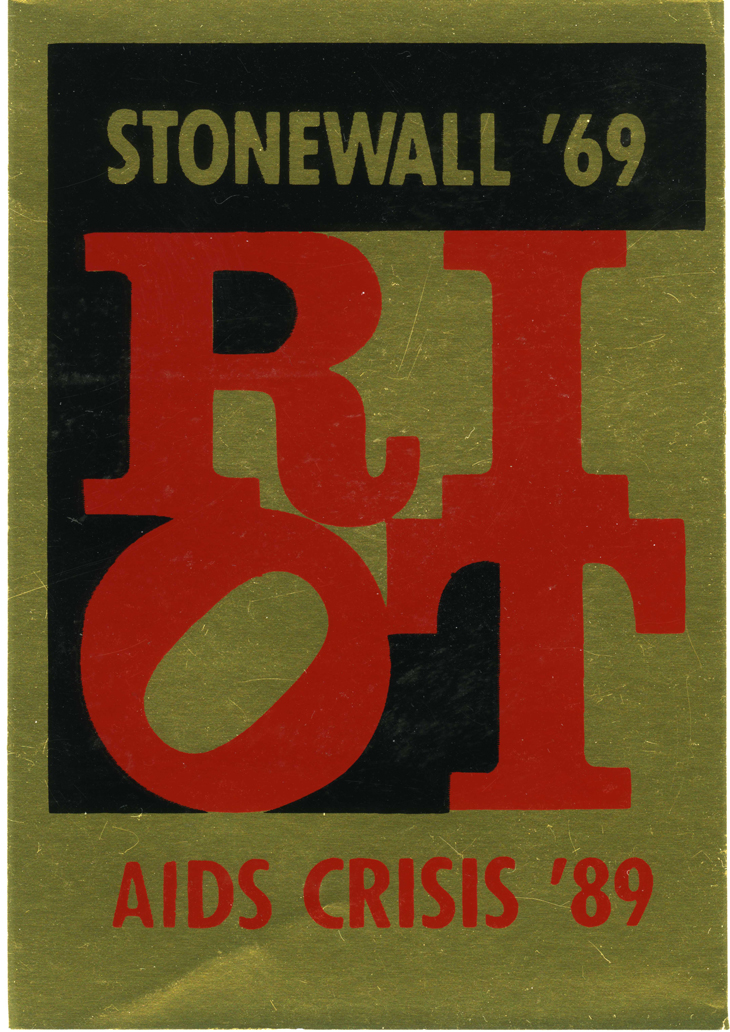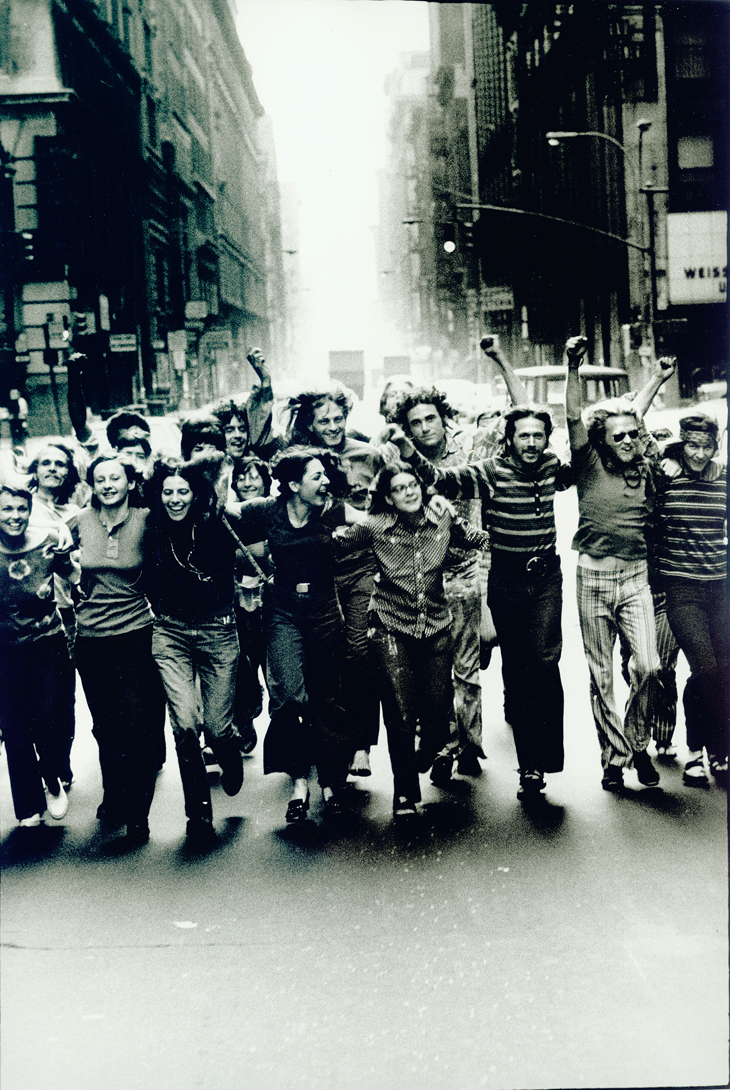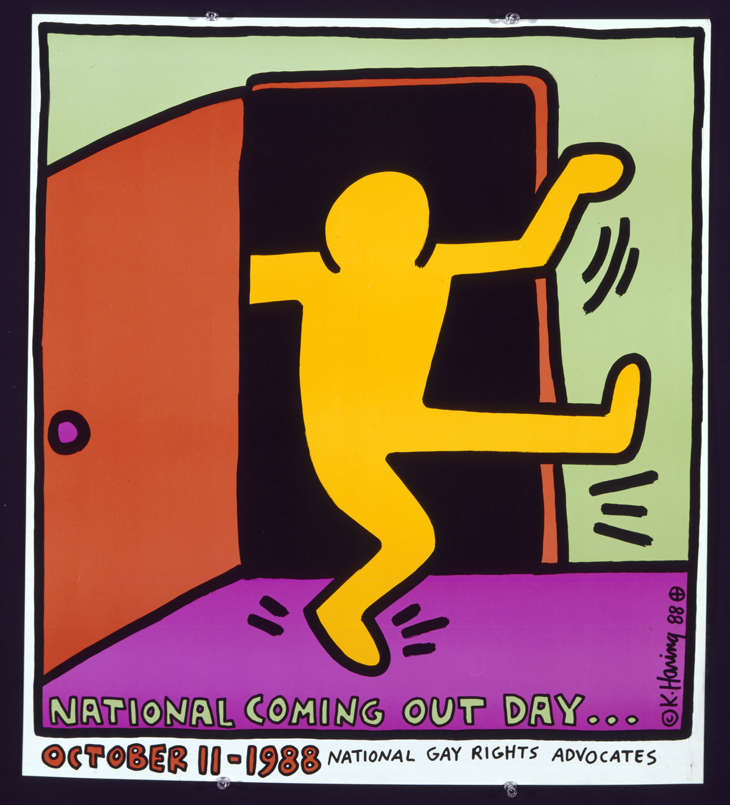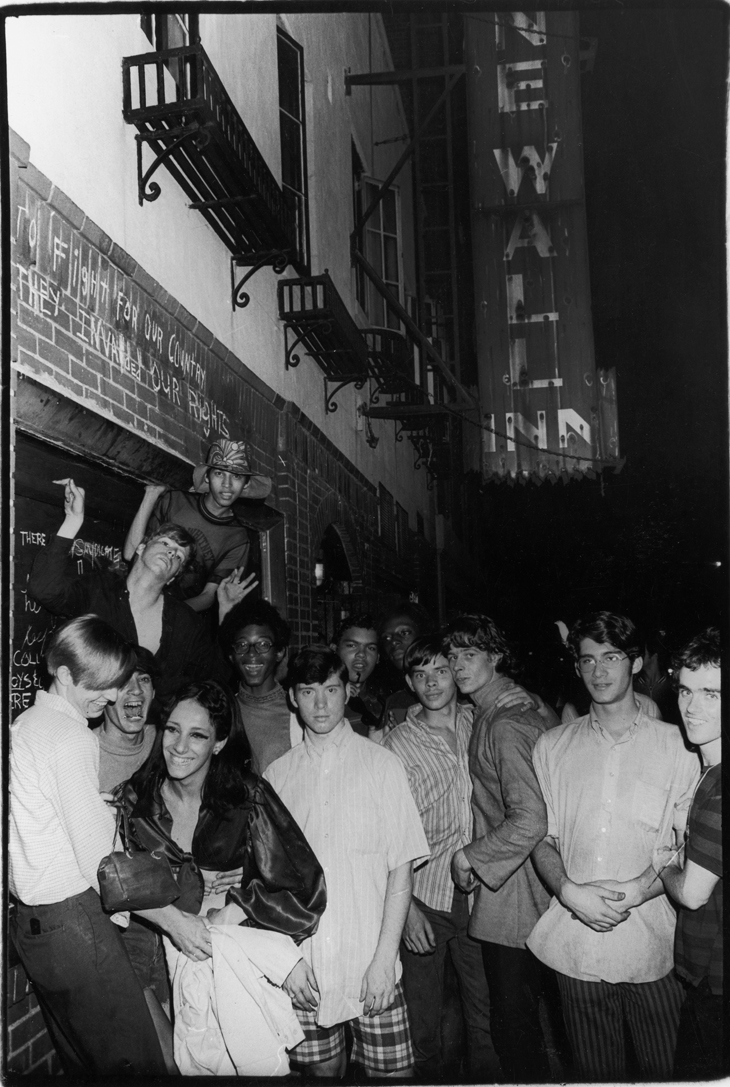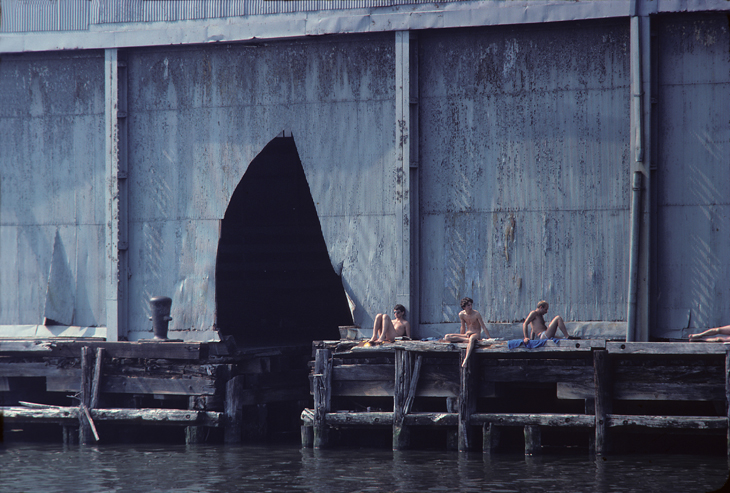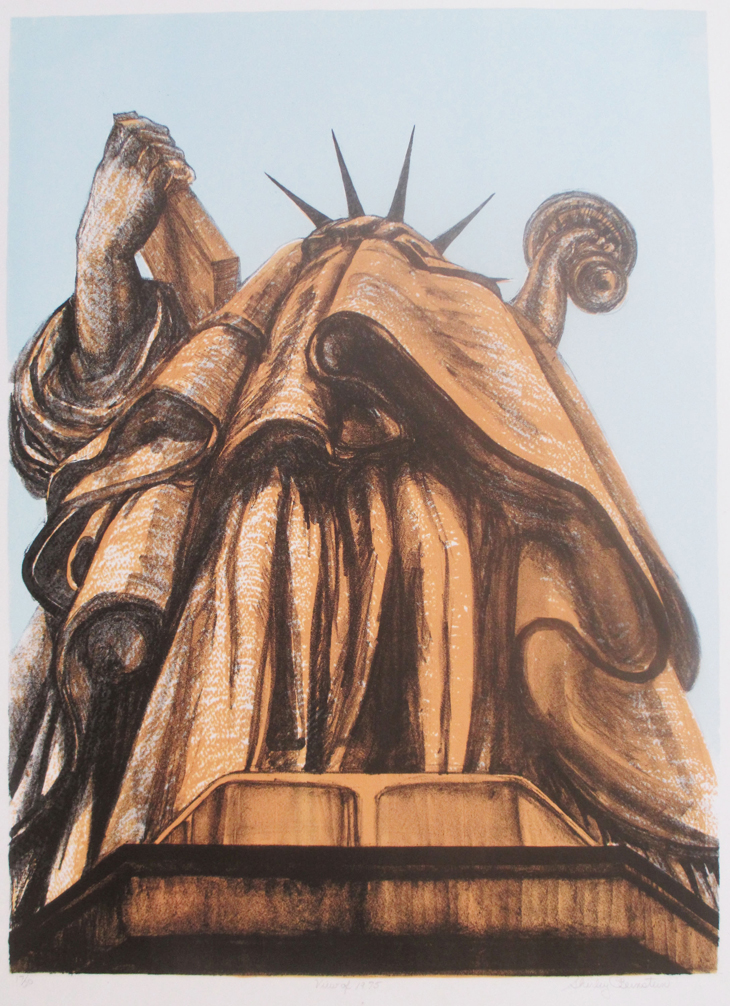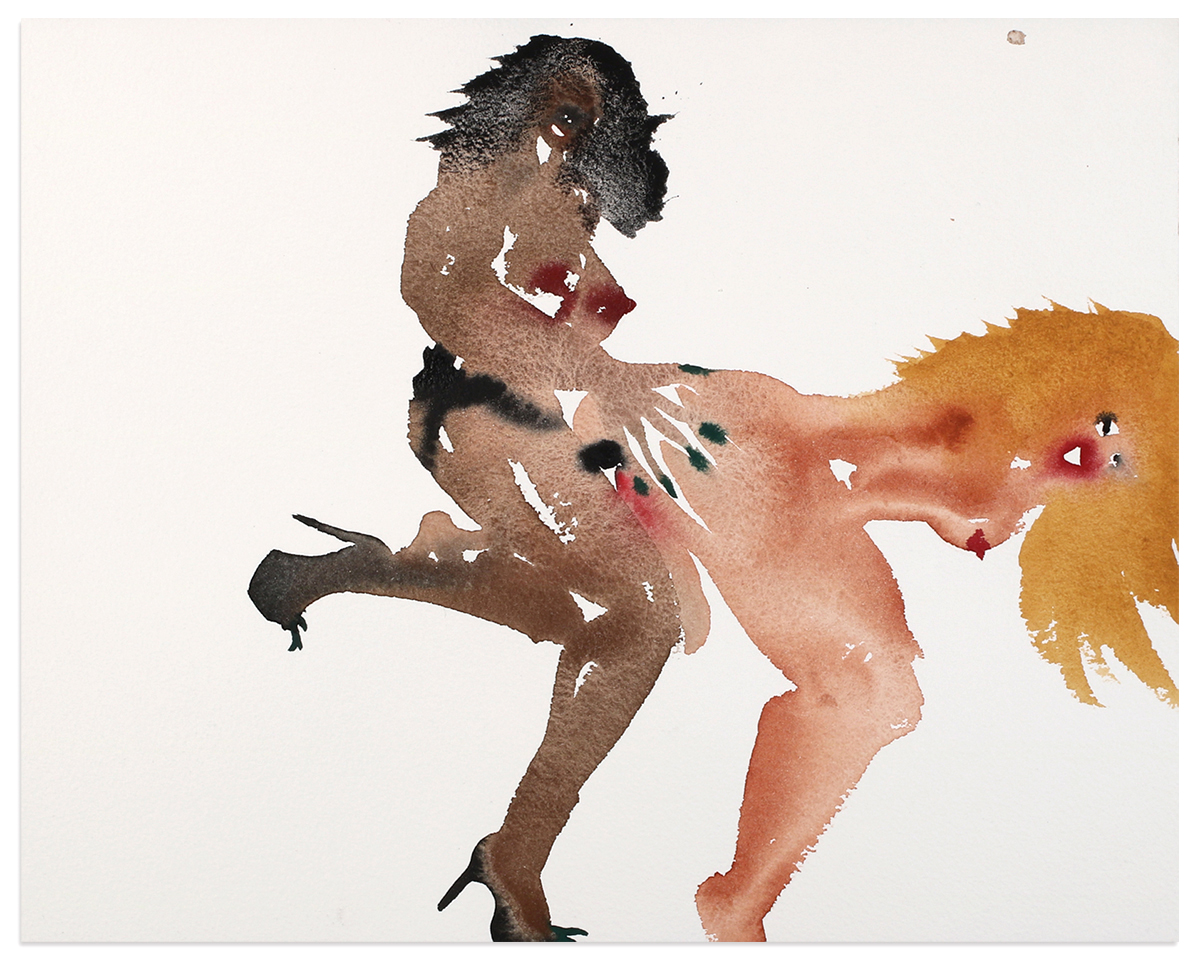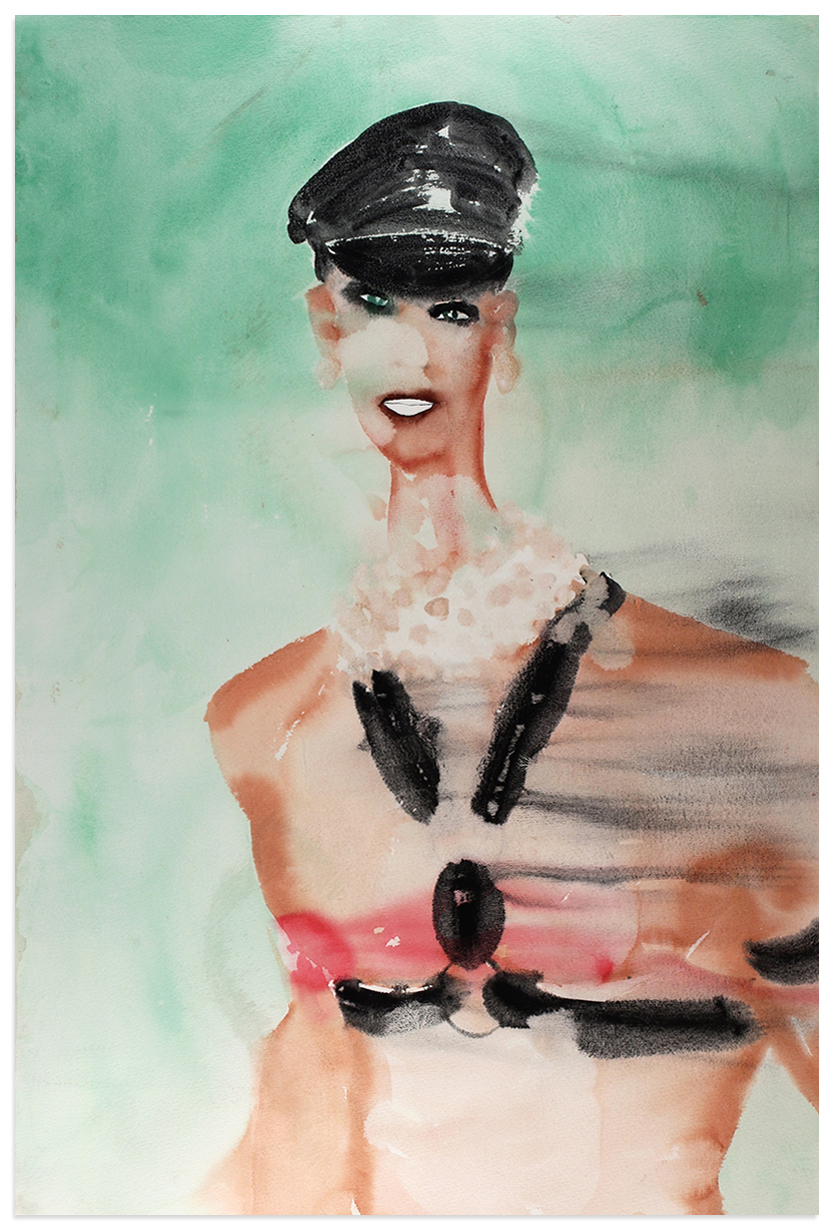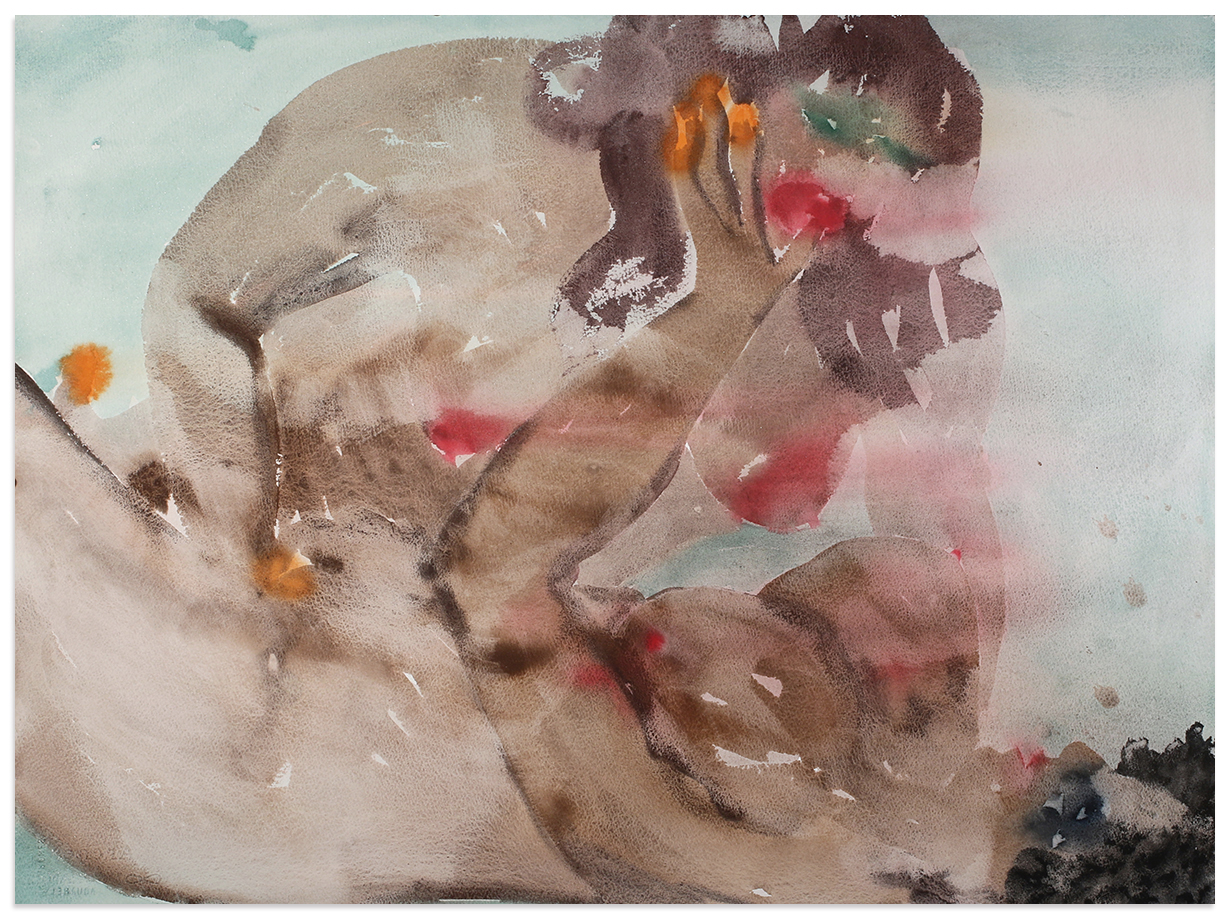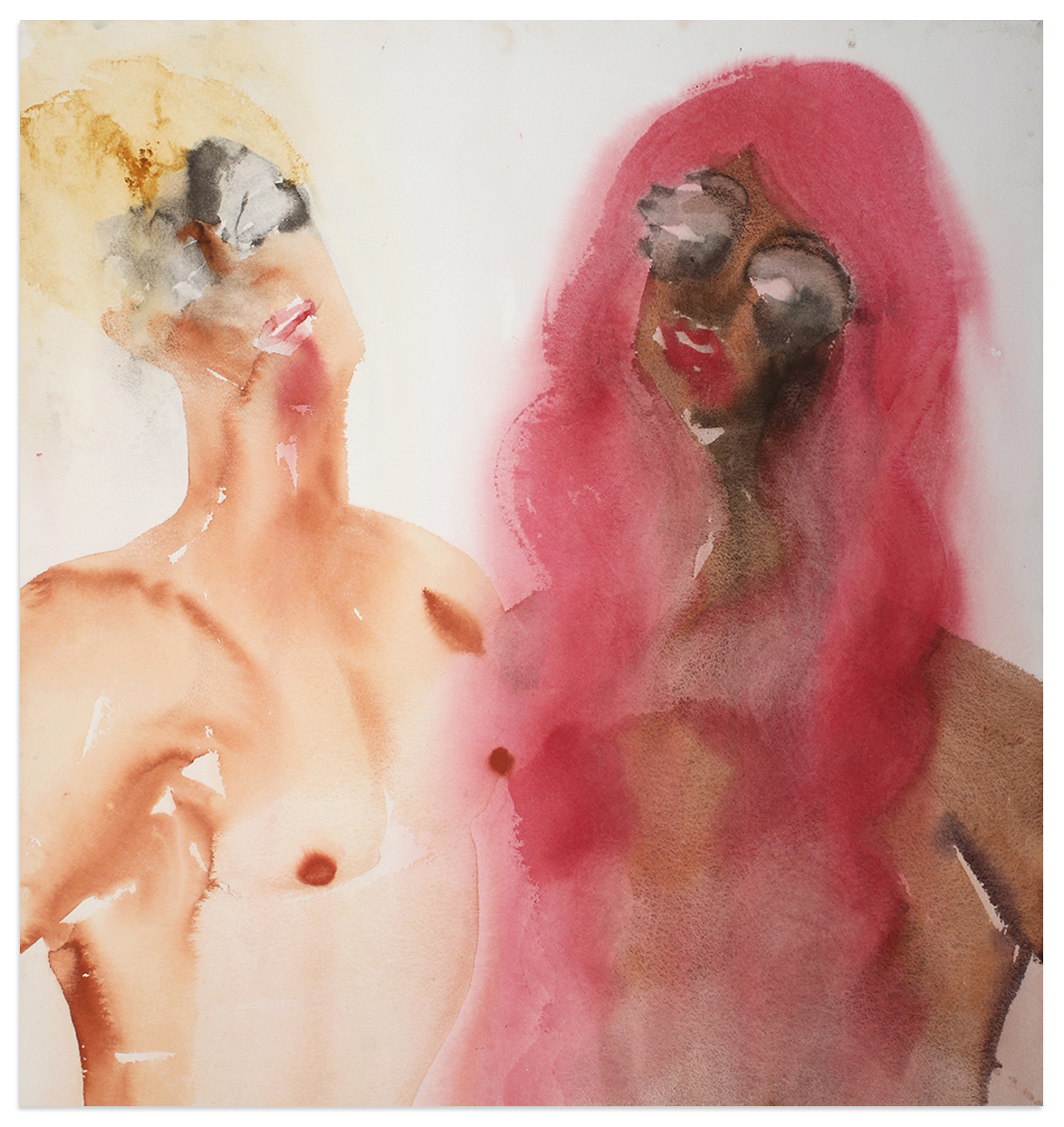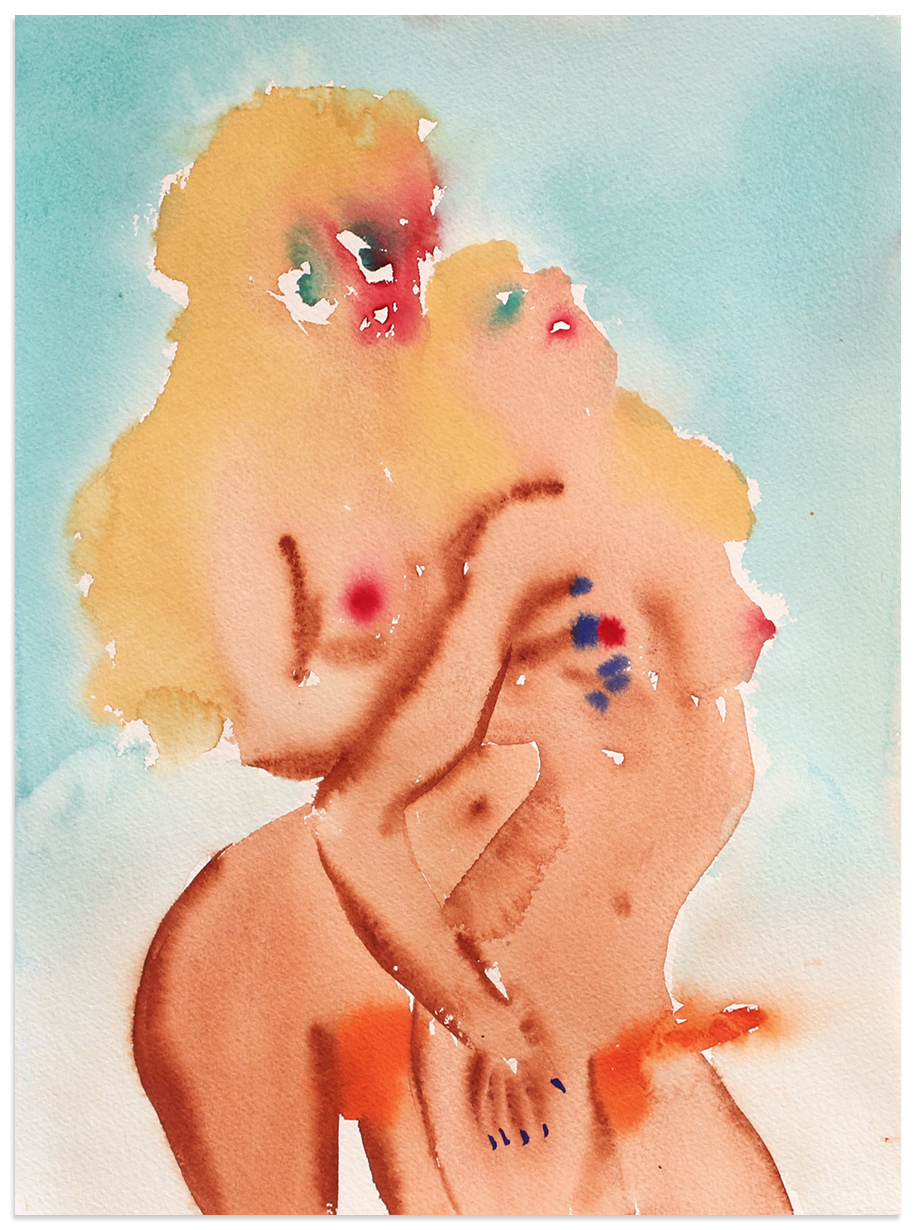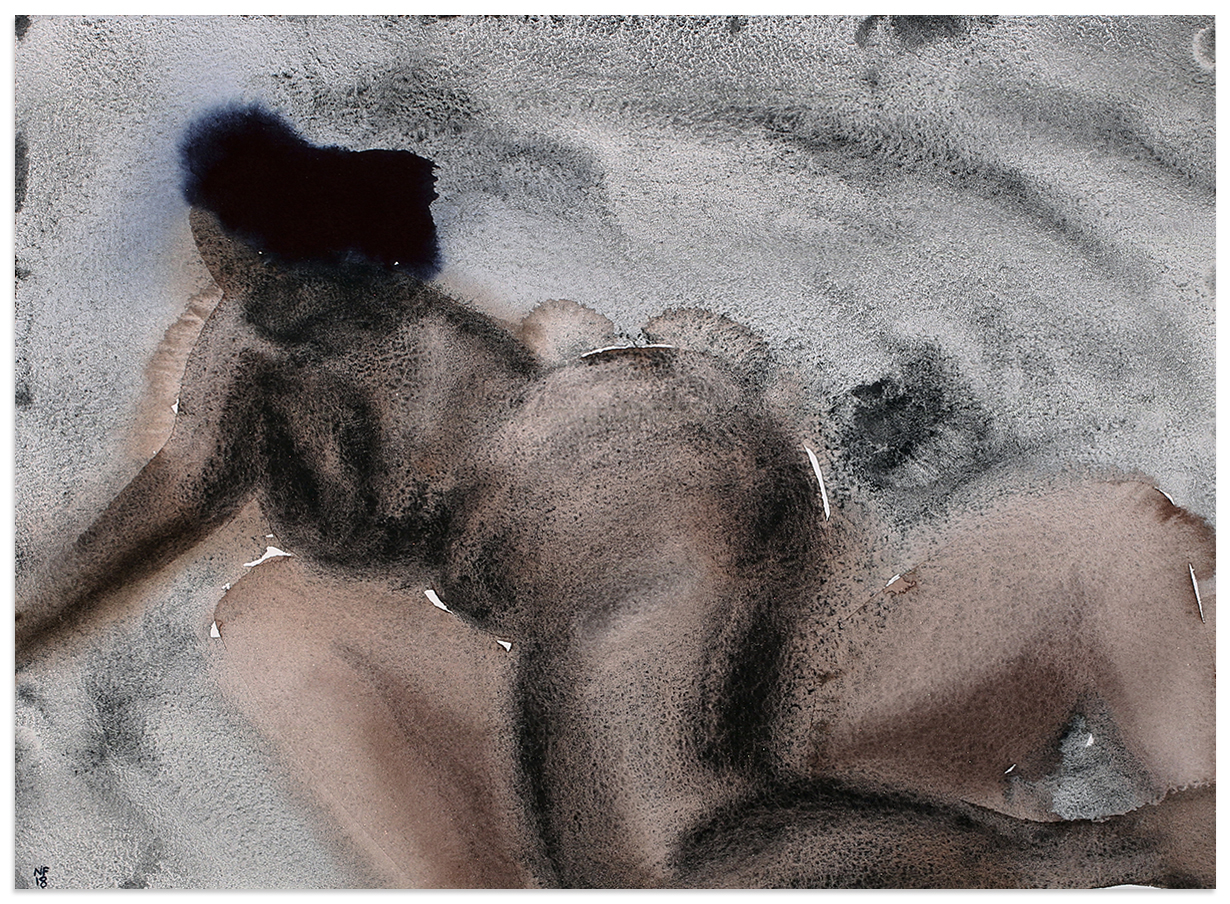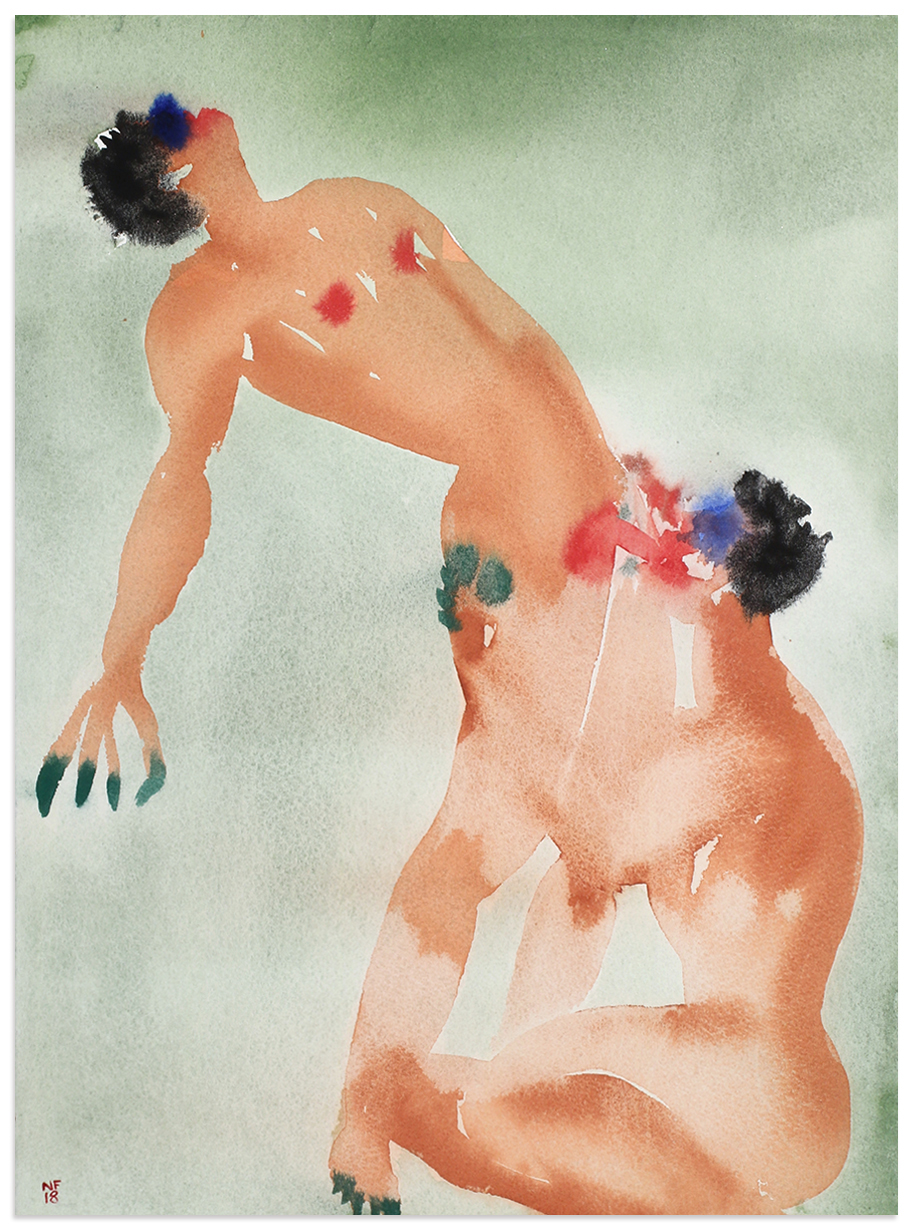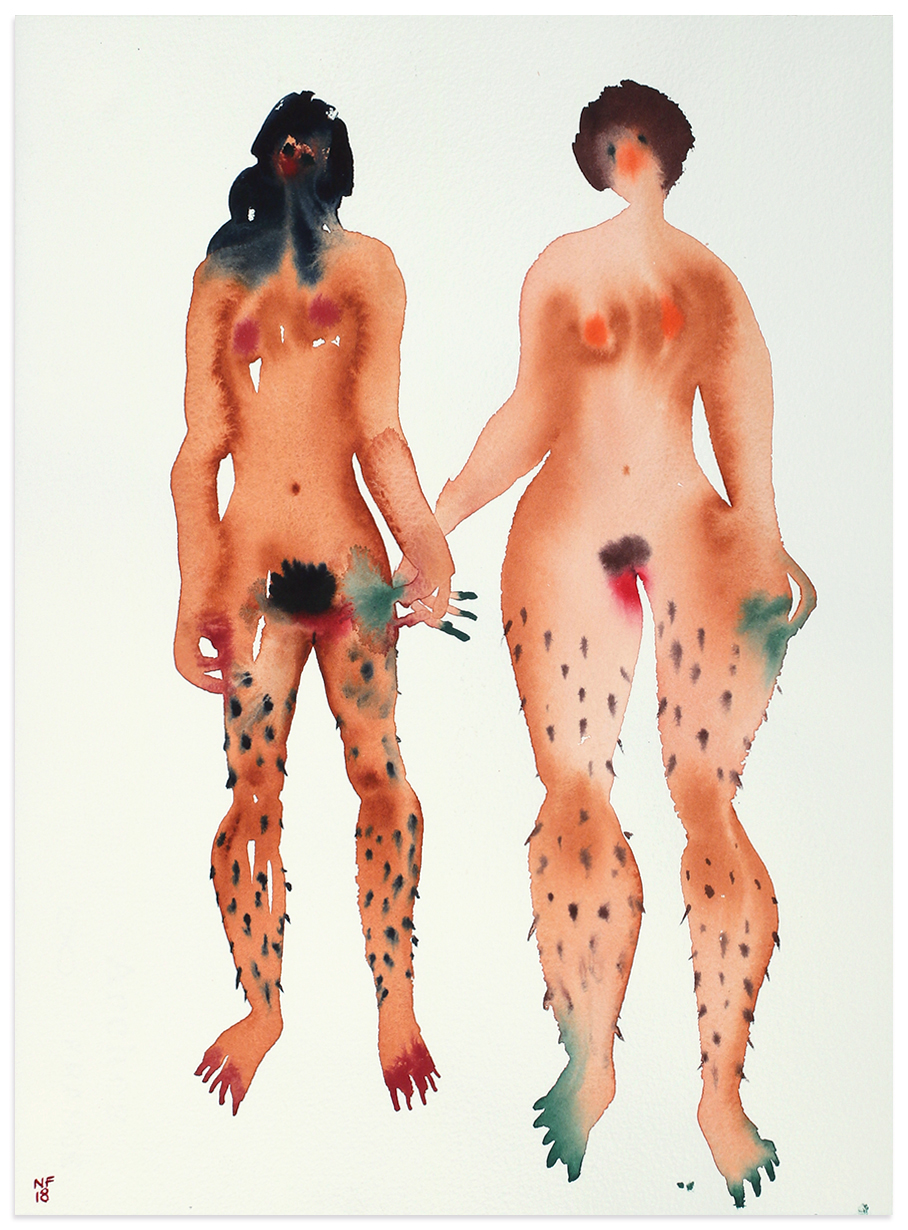Alannah Farrell — the sexual awakening to colors and hues, to kinks and dreams. This queer, trans-identifying artist from rural New York gracefully depicts the real bodies of their queer scene in atmospheric paintings, the magic of which stems from the shapely emotional nuances of each subject. Here, their struggles are visible, but so are the celebrations. Though currently represented by Harper’s and Anat Ebgi, they've had an enduring journey to their current career, beginning as a child yearning for a creative outlet, from babysitter, to cashier, to model, to dungeon domme, and later, Cooper Union graduate, allowing their art to leap from the confines of their bedroom to their first show at The Painting Center in New York. With the vibrant bodies and milky pigments enclosed in these works, Farrell expresses the multifaceted layers of their subjects’ queer identities, supporting the normalization of all expressions of beauty and power within the LGBTQI+ community. We see these queer bodies and faces through a lens unfocused on the taboo fascination that society perpetuates. It is one that instead centers the subject and how they wish to be seen and heard. Undoubtedly a New Yorker, Farrell pursues these intimate scenes and perseverances throughout the city with heart. They allow us, the viewers, into these blissful connections. We sat down with Farrell to discuss their expansive ideas surrounding queer identity in art, the fluidity of life, and their newest solo exhibition, I Want to Thank you, at Harper’s Gallery in New York. Read more.
Theophanies Explores The Late Steven Arnold's Personal Mythologies @ Fahey/Klein In Los Angeles
Realized between 1981 and 1993, Steven Arnold’s tableau photography represents a confluence of his myriad other disciplines. This modality allowed him the freedom to fully realize his cinematic visions without outside influence or compromise. After sketching storyboards inspired by his dreams, a habit from his filmmaking days, Arnold would craft his tableaus using cardboard, seamless paper, metallic and patterned fabrics, cut paper, paint, and selections from his obsessive collection of antiques, costumes, makeup, and dime store finds. Finally, he would dress, paint, and pose his models within his tableau, bringing his vision to life, then captured with his Hasselblad, often utilizing multiple exposures.
Theophanies is an exhibition of works curated as a limited retrospective of the late artist’s surrealist tableau photographs, supported by a small selection of drawings, paintings, sculpture, and films. A proud, prominent member of the LGBTQ community years before this moniker became part of our common vernacular, Arnold sadly died of AIDS in 1994. Most recently, he is the subject of a documentary, Steven Arnold: Heavenly Bodies, co-narrated by Anjelica Huston and Ellen Burstyn, which will be screened on September 21 at the Philosophical Research Society in Los Feliz. The screening will be followed by a panel discussion with filmmaker Vishnu Dass, writer/editor Steffie Nelson, writer/filmmaker Jessica Hundley (The Library of Esoterica) and Nicholas Fahey of Fahey/Klein Gallery.
Theophanies is on view through September 24 @ Fahey/Klein Gallery 148 North La Brea Avenue
Sadie Barnette: The New Eagle Creek Saloon @ ICA In Los Angeles
For her first solo museum presentation in Los Angeles, Oakland-based artist Sadie Barnette (b. 1984) will reimagine the Eagle Creek Saloon, the first black-owned gay bar in San Francisco, established by the artist’s father Rodney Barnette, founder of the Compton, CA chapter of the Black Panther Party. From 1990–93 Barnette’s father operated the bar and offered a safe space for the multiracial LGBTQ community who were marginalized at other social spaces throughout the city at that time.
Barnette engages the aesthetics of Minimalism and Conceptualism through an idiosyncratic use of text, decoration, photographs, and found objects that approach the speculative and otherworldly. Barnette’s recent drawings, sculptures, and installations have incorporated the 500-page FBI surveillance file kept on her father and references to West Coast funk and hip-hop culture to consider the historical and present-day dynamics of race, gender, and politics in the United States. Using materials such as spray paint, crystals, and glitter, she transforms the bureaucratic remnants from a dark chapter in American history into vibrant celebrations of personal, familial, and cultural histories and visual acts of resistance. The New Eagle Creek Saloon is a glittering bar installation that exists somewhere between a monument and an altar, at once archiving the past and providing space for potential actions. During the run of the exhibition at ICA LA, the installation will be activated by performances, talks, and other social events. The New Eagle Creek Saloon is on view through January 26, 2020 at ICA LA 1717 E. 7th Street, Los Angeles. photographs courtesy of the gallery
"Art after Stonewall, 1969–1989" @ New York University’s Grey Art Gallery & the Leslie-Lohman Museum of Gay and Lesbian Art
Coinciding with the 50th anniversary of the Stonewall Uprisings, Art after Stonewall, 1969–1989 is a long-awaited and groundbreaking survey that features over 200 works of art and related visual materials exploring the impact of the Lesbian, Gay, Bisexual, Transgender, and Queer (LGBTQ) liberation movement on visual culture. Presented in two parts—at New York University’s Grey Art Gallery and the Leslie-Lohman Museum of Gay and Lesbian Art—the exhibition features artworks by openly LGBTQ artists such as Vaginal Davis, Louise Fishman, Nan Goldin, Lyle Ashton Harris, Barbara Hammer, Holly Hughes, Greer Lankton, Robert Mapplethorpe, Catherine Opie, Joan Snyder, and Andy Warhol. On view at the Grey Art Gallery from April 24 through July 20, 2019 and at the Leslie-Lohman Museum from April 24 through July 21, 2019, the exhibition is organized by the Columbus Museum of Art. Art after Stonewall, 1969–1989 is on view through July 20 at New York University’s Grey Art Gallery and the Leslie-Lohman Museum of Gay and Lesbian Art. photographs
Nadine Faraj Presents Get Used To Us @ Anna Zorina Gallery In New York
“Get Used To Us” echoes a historic LGBTQ rights slogan "We're here! We're queer! Get used to us!” Nadine Faraj’s fluid wet-on-wet technique abstracts erotic scenes to reflect an essence of sexual freedom that celebrates the mutability of gender and identity. The artist’s expressive application of pigment creates a blurring of boundaries between her subjects in a way that mirrors the suspension of self when provoked by passion. Get Used To Us will be on view through April 6 at Anna Zorina Gallery 532 West 24 Street, New York. photographs courtesy of Anna Zorina Gallery, New York City.
Support Faye Orlove's "Junior High" Initiative To Provide A New Art Space In Hollywood
Junior High is a soon-to-be community space in Hollywood, California that seeks to embolden and empower overlooked voices in the arts. Click here to learn more and support.
Macho Mel: Read Our Convo With the Endlessly Fascinating Mel Shimkovitz On Trans Vampires, Meeting William Burroughs, and Making It In Hollywood →
In the following interview, we have a long chat with Mel Shimkovitz about Trans vampires, her Zelig-like position in the music, art and Hollywood worlds, and the media’s sudden shift in focus toward the lives and rights of the LGBTQ community. Click here to read the full convo.


